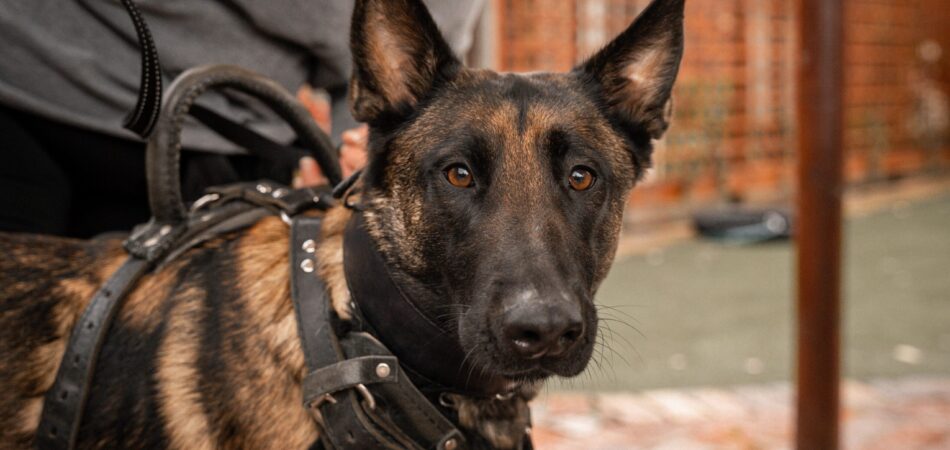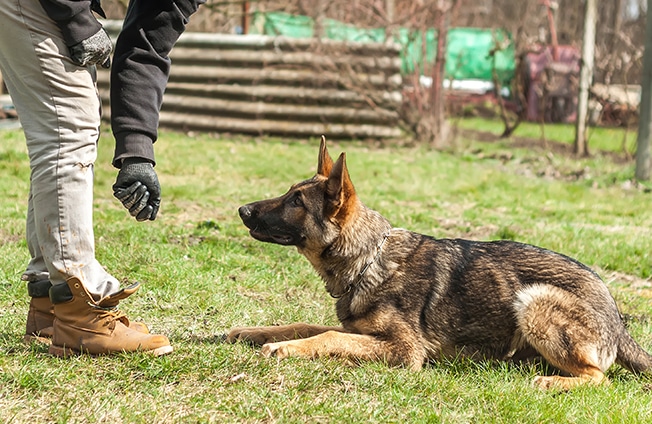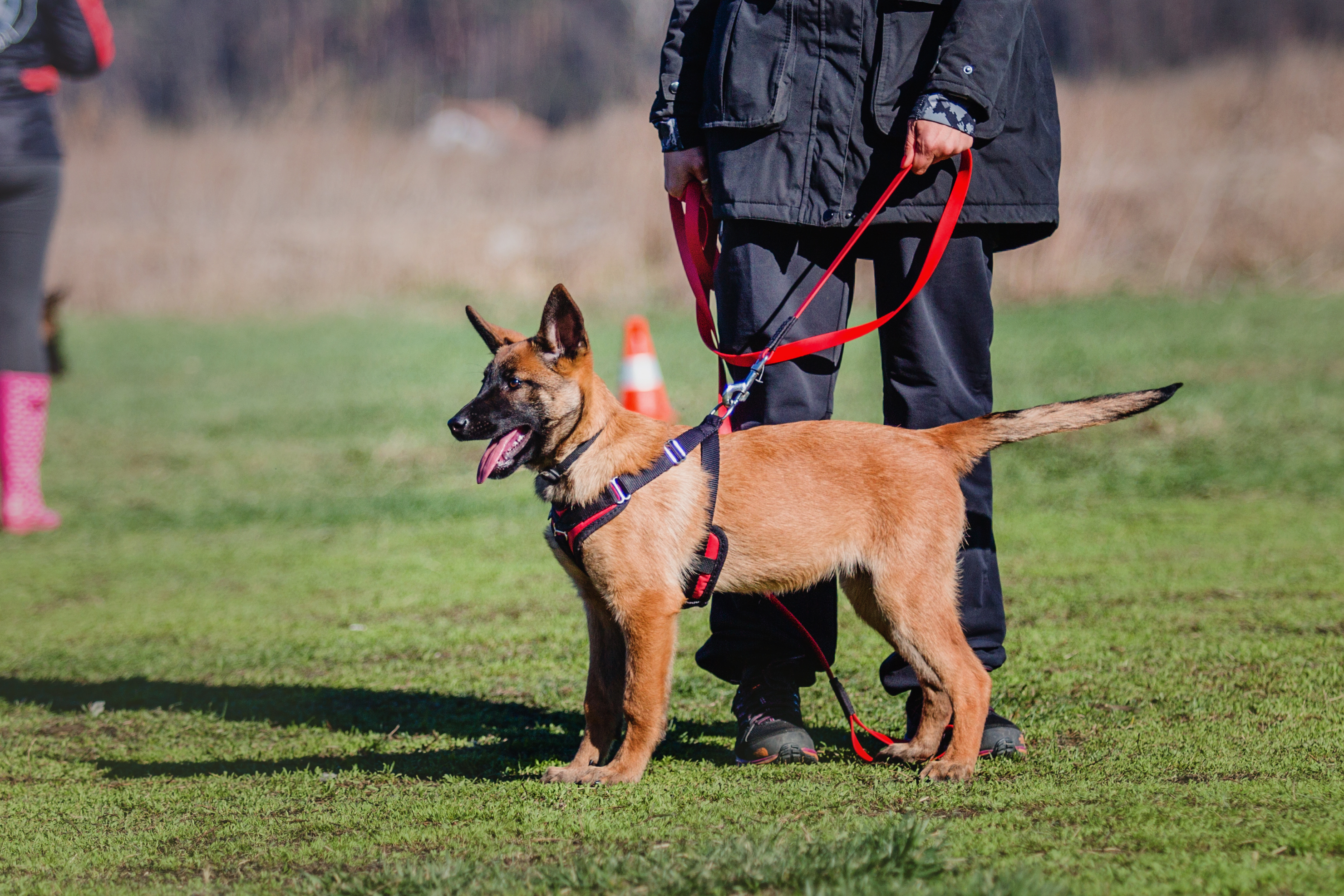






“The best alarm system won’t do you any good if no one is home to hear it.” – Unknown
But a burglary protection dog is always home, always alert, and always ready to act. This simple truth underscores a basic advantage that these dogs have over even the most advanced electronic security systems.
I know…I know, it might appear counterintuitive to place such faith in an age-old solution.
Yet, as Noel “Razor” Smith, a reformed burglar puts it, “A dog is a burglar’s worst enemy. It’s not just the bark —it’s the unpredictability. You never know what you’re going to get, and that’s terrifying when you’re trying to break in.”
This firsthand account reveals a truth often overlooked: the deterrent effect of a well-trained protection dog.
In the following sections, we’ll look at how these intelligent animals complement modern security, the psychological edge they provide, and the commitment they require.
From their instincts to their specialized training, we’ll help you understand why these dogs continue to be an effective deterrent in the face of advancing security technology.
 From the dawn of civilization, dogs have been our steadfast companions and protectors. Far more than pets, they have served as essential allies in our struggle for survival and security.
From the dawn of civilization, dogs have been our steadfast companions and protectors. Far more than pets, they have served as essential allies in our struggle for survival and security.
In the early days, when the line between wilderness and human habitation was thin, dogs were our first line of defense.
Their keen senses and natural territorial instincts made them invaluable guards, alerting our ancestors to approaching predators or hostile tribes long before human ears could detect danger.
These early dogs were not the specialized breeds we see today, but rather adaptable, hardy animals that could hunt alongside humans by day and stand watch by night.
As human societies evolved, so did the role of dogs. They became livestock protectors, fearlessly defending flocks and herds from predators.
The Middle Ages saw the rise of the mighty mastiff, a fierce protector of castles and strongholds. Their size and intimidating presence were often enough to deter invaders.
As urban centers grew, dogs continued to adapt to new security roles. In 18th and 19th century London, for instance, night watchmen often patrolled with dogs at their side, relying on their canine partners’ superior senses to detect trouble in the dark, fog-shrouded streets.
Today, while threats have changed, the role of dogs in home security remains relevant. Their barks are still our early warning systems, and their protective instincts offer peace of mind.
Today’s burglary protection dogs are a far cry from the generalist guard dogs of the past.
Carefully bred and intensely trained for today’s urban and suburban environments, these canines are the ultimate example of evolution in action.
They continue to prove their worth, adapting to new challenges and complementing technological defenses in innovative ways.
But….
…“How exactly do these super-dogs fit into our increasingly digital world of home security?”
Great question.
Let’s dive in.
The mere presence of a protection dog is a powerful psychological deterrent, often stopping criminals in their tracks before they even attempt a break-in.
This deterrent effect stems from several factors:
Burglary protection dogs blend instinctive protective behaviors with advanced training techniques, creating a highly effective deterrent against modern threats.

Protection dogs can detect the unique scent signatures of individuals, even catching whiffs of unfamiliar persons approaching the property perimeter.
As a result, these vigilant animals can provide early warning of potential intruders, acting as a crucial first line of defense long before a threat is visually apparent.
Protection dogs create a comprehensive threat assessment system.
They can differentiate between routine environmental noises and genuinely suspicious activities, reducing false alarms while ensuring no real threat goes unnoticed.
Plus their ability to read human behavior and respond accordingly makes them active and reliable protectors.
Trained protection dogs can communicate the nature and severity of perceived threats through different types of barks, body language, or specific trained behaviors.
This nuanced communication allows homeowners to gauge the urgency of the situation and respond appropriately.
Electronic systems can be compromised or experience downtime, but a protection dog’s sensory awareness remains active 24/7.
Even when resting, these dogs maintain a level of environmental awareness, ready to spring into action at the first sign of danger.
The journey begins with selecting the right candidate. Breeds like German Shepherds, Belgian Malinois, and Rottweilers are popular choices, but individual temperament is more important than breed stereotypes.
Trainers look for dogs with a perfect balance of confidence, intelligence, loyalty, and a natural protective instinct.
Once selected, the dogs start a training regimen. Forget simple “sit” and “stay” commands – this is canine boot camp.
Try to imagine a dog learning to distinguish between a friendly neighbor and a potential threat, all while maintaining the composure of a loving family pet.
That there is a delicate balance between sharpening instincts and instilling discipline.
“We create scenarios that would put Hollywood action movies to shame,” explains Vit Singh, a veteran trainer. “Home invasions, carjackings, even hostage situations – our dogs learn to handle it all with the right level of response.”
Surprisingly, a significant portion of training focuses on the opposite of aggression. These dogs must smoothly transition from vigilant protectors to gentle playmates – a Jekyll and Hyde act that requires impeccable training and a bomb-proof temperament.
“And it’s this ability to switch gears that sets protection dogs apart,” notes Singh. “They’re not mindless attack machines. They’re discerning, adaptable, and above all, controlled.”
Nowadays, the Burglary protection dogs are extremely useful assets when included in a comprehensive security system.
Their abilities complement technology, creating a strong defense plan.
For instance, a well-trained protection dog will not only alert you of an intruder but also can trigger your smart home system to lock doors, activate cameras, and send alerts to your phone.
Some trainers are even experimenting with dog wearables. We’re looking at tech that allows real-time monitoring of the dog’s vital signs and location.
Moreover, dogs also provide security backup. Power outages, system failures, or cyberattacks can render electronic security systems useless, but a dog’s vigilance remains constant.
This ensures uninterrupted protection.
Vanguard Protection Dogs provides elite Rottweilers, German Shepherds, Belgian Malinois, and Dobermans, expertly trained for the highest level of executive protection.
But….Why Choose Vanguard?
Get in Touch with Vanguard Today and get a protection dog that will protect what matters most!